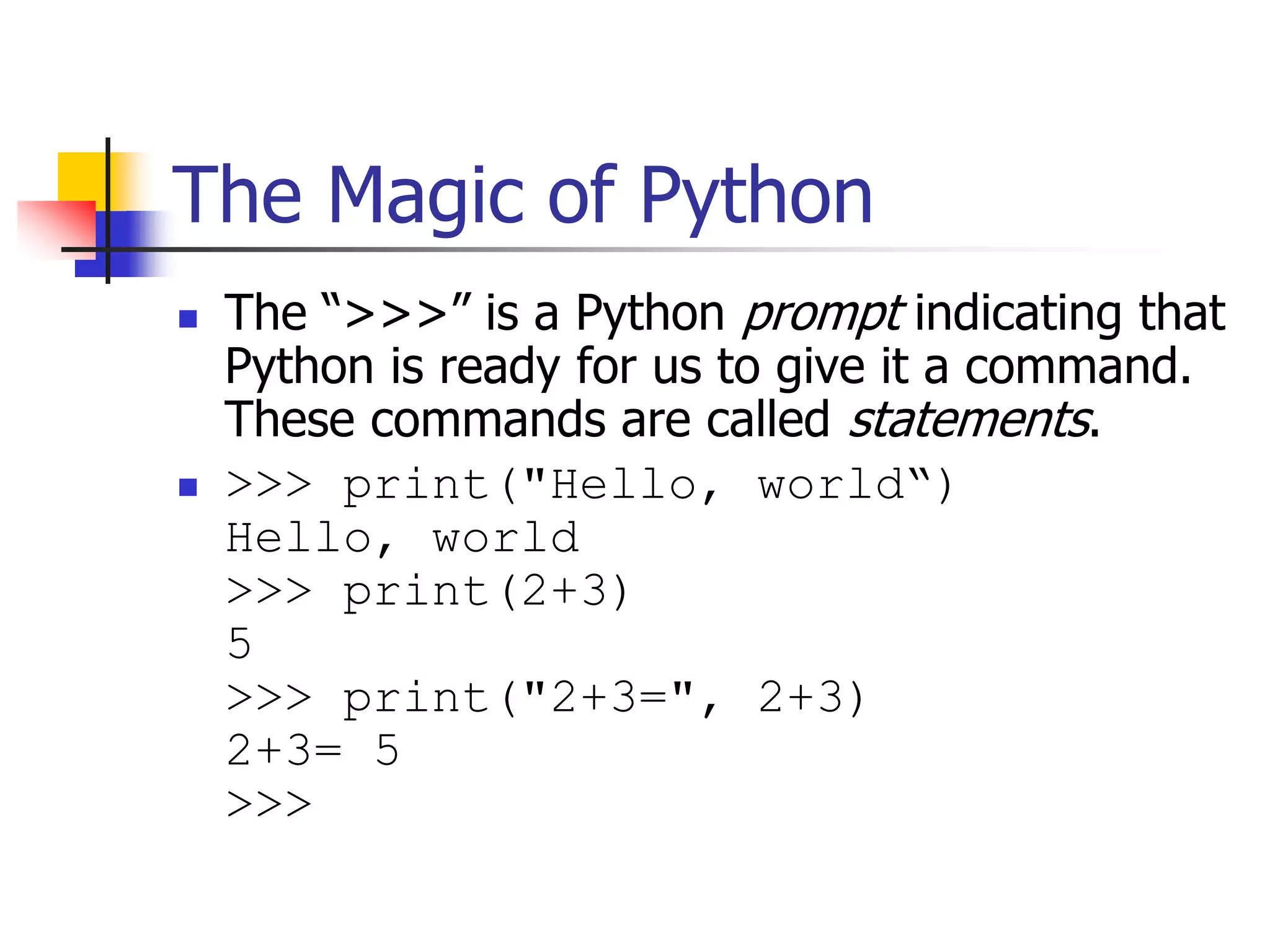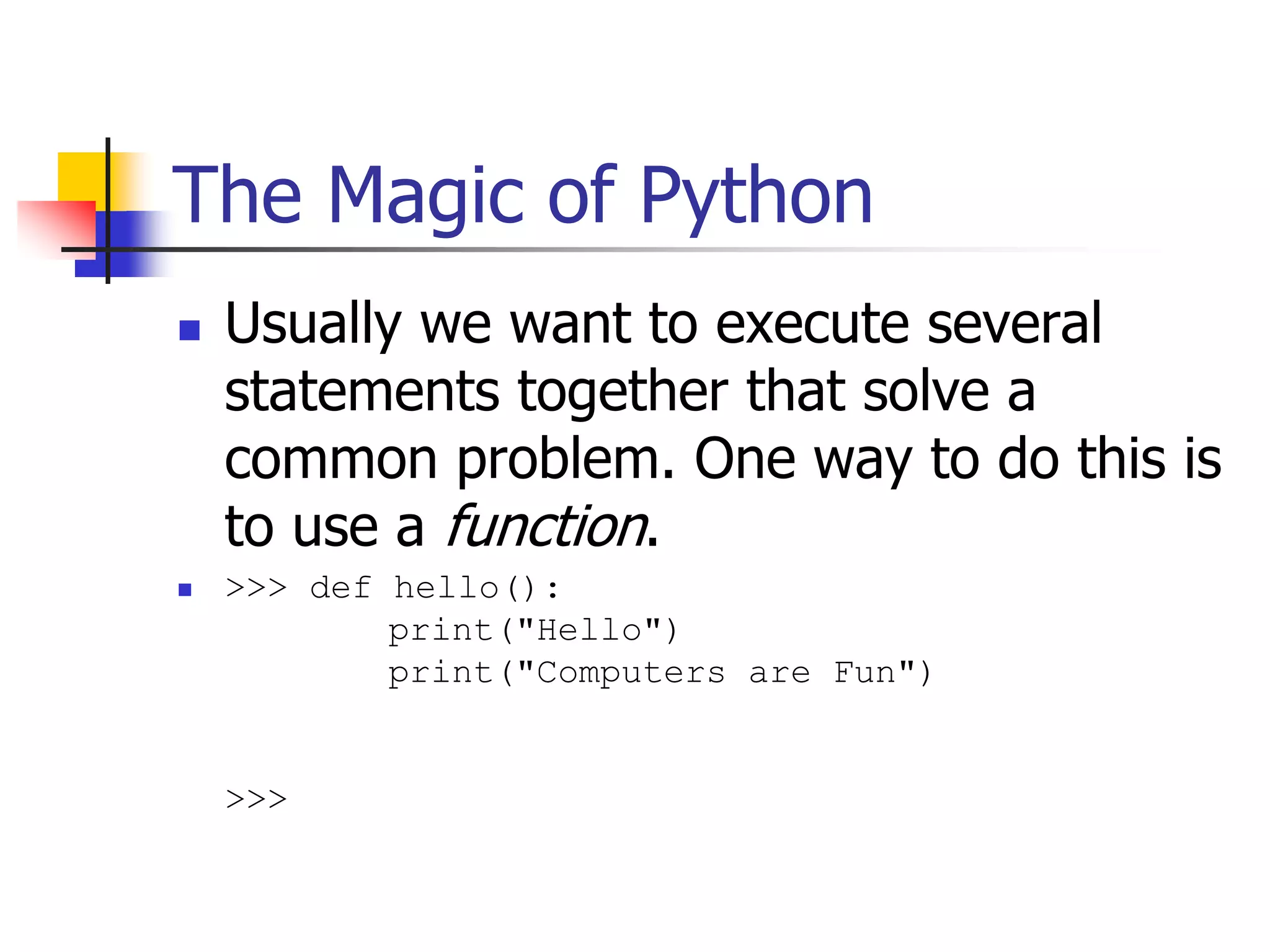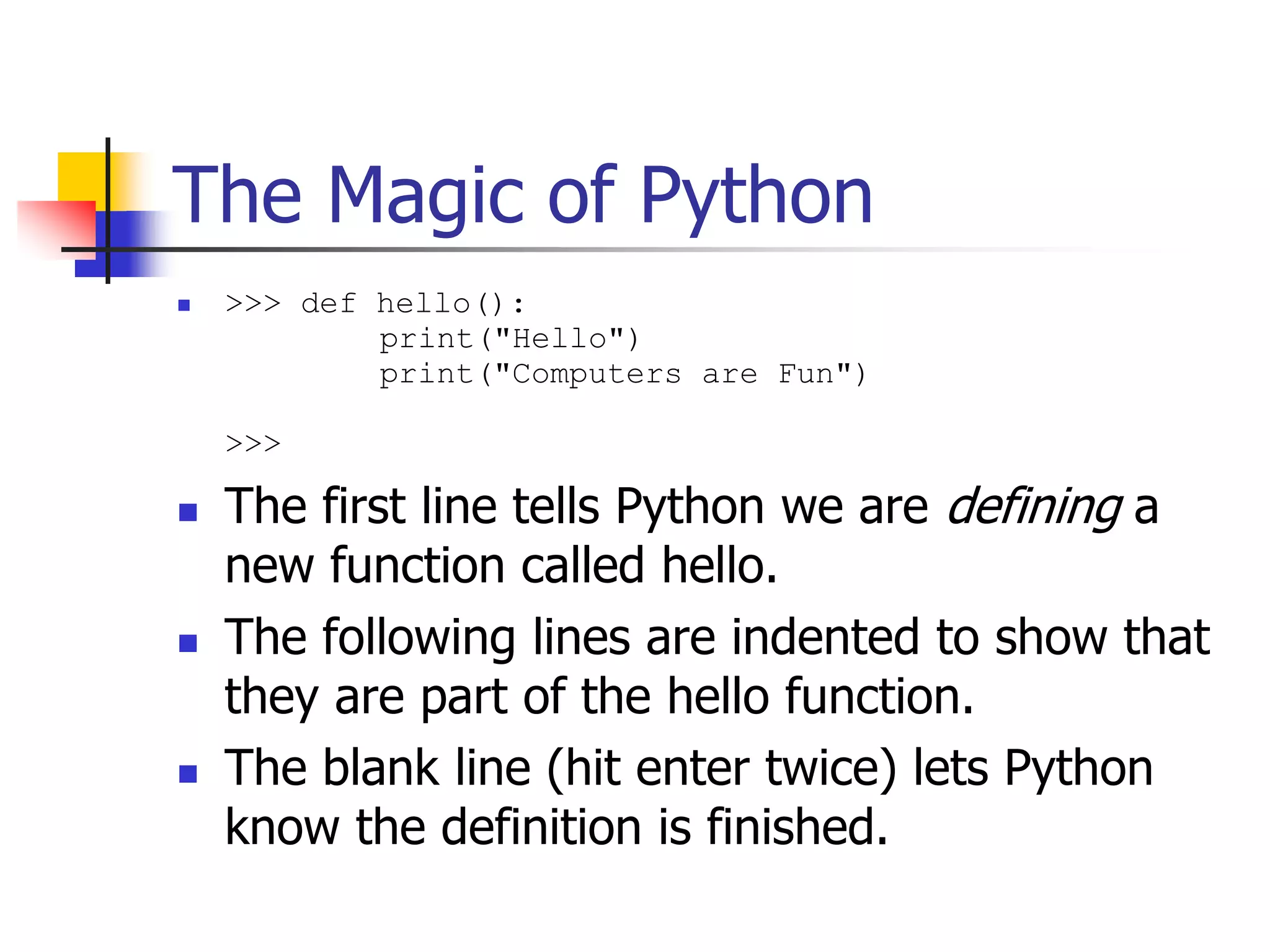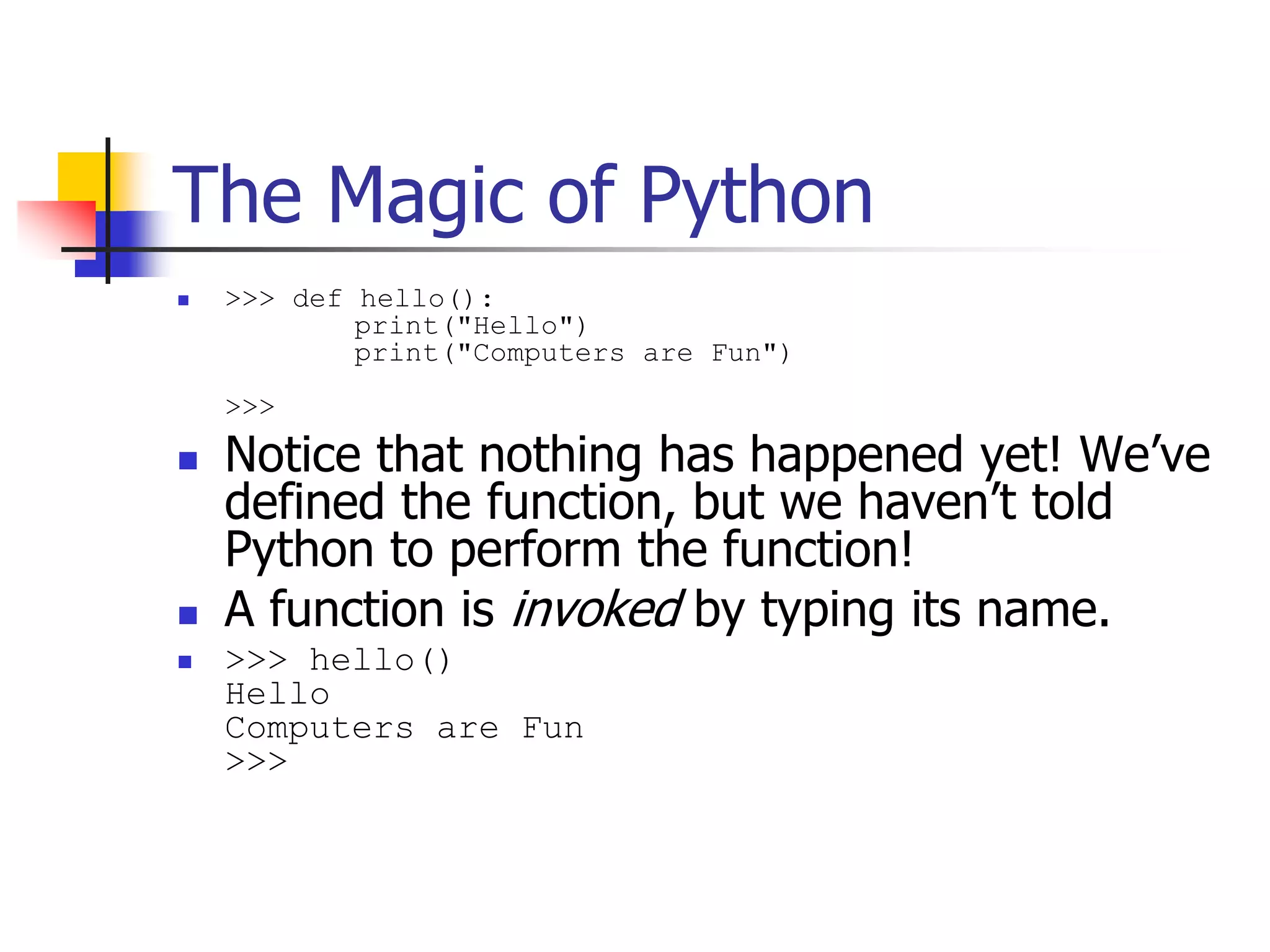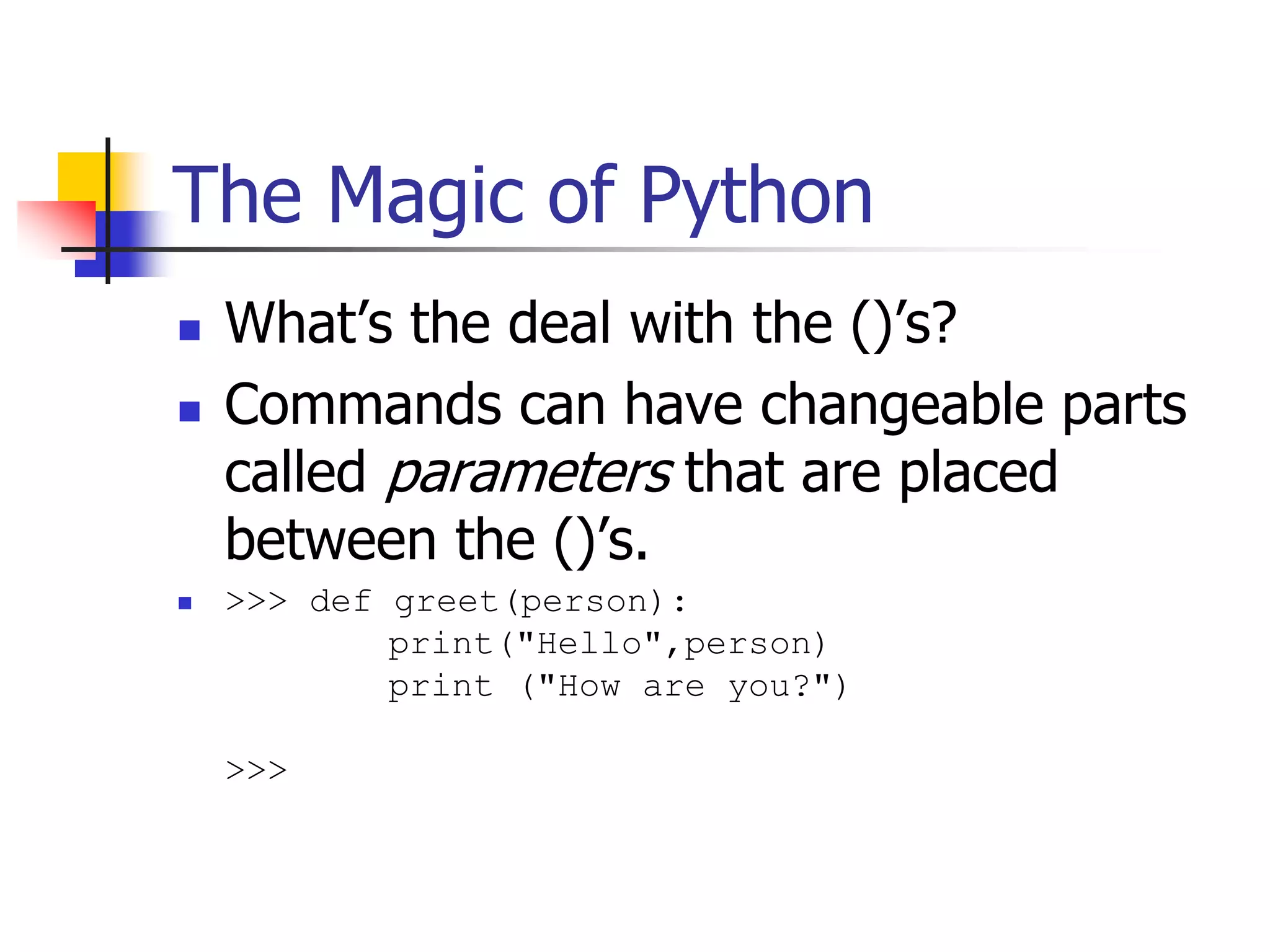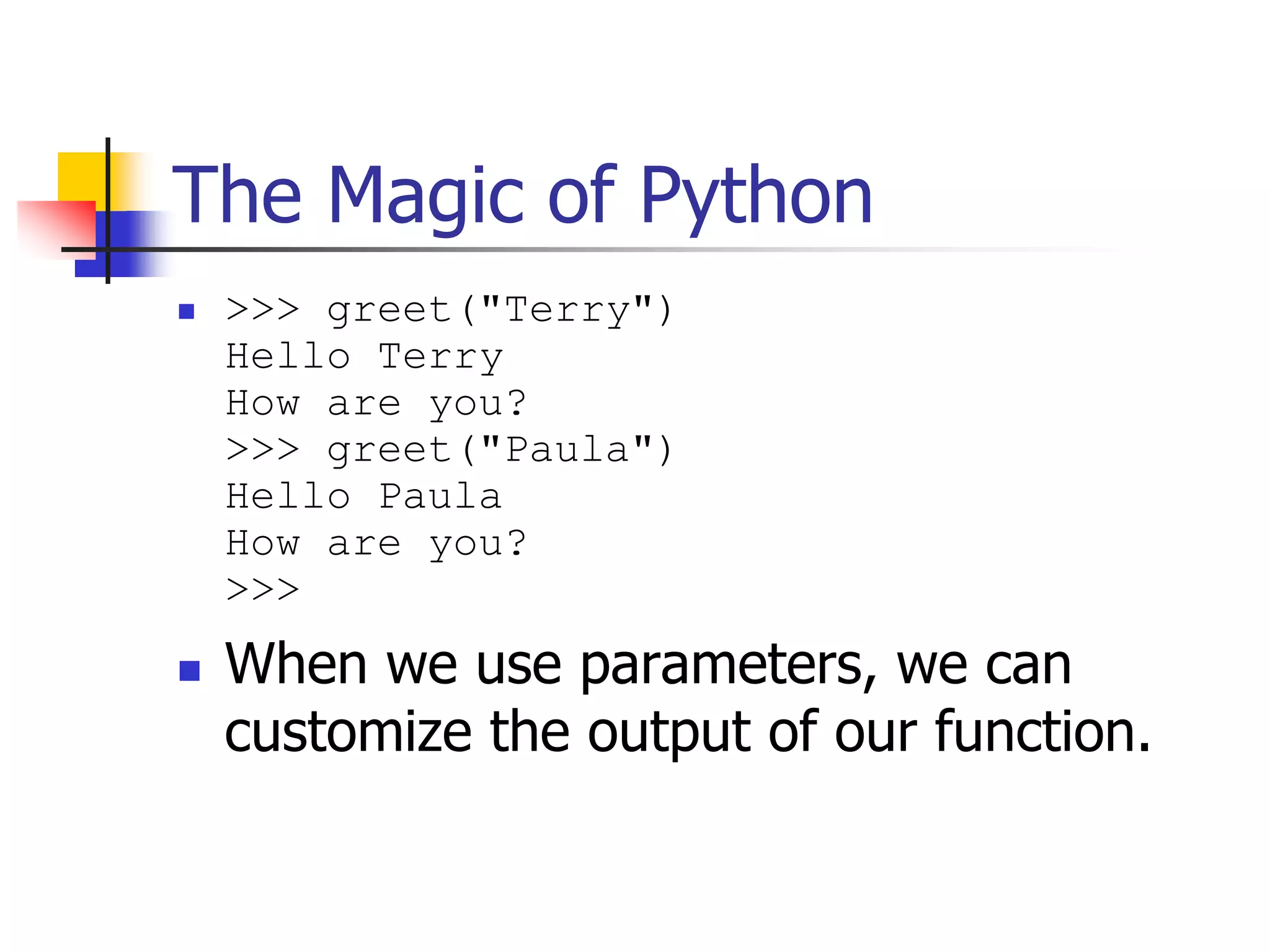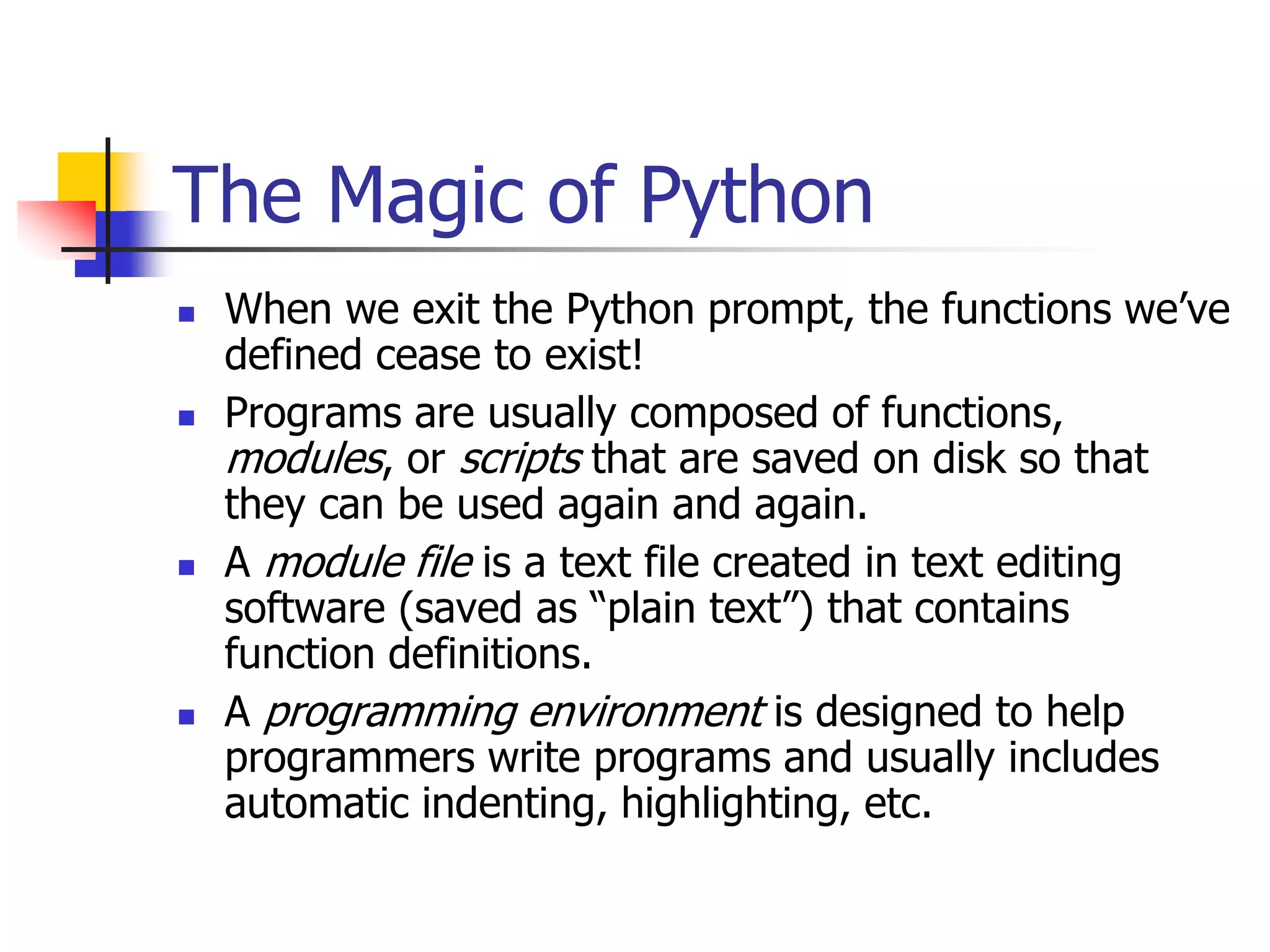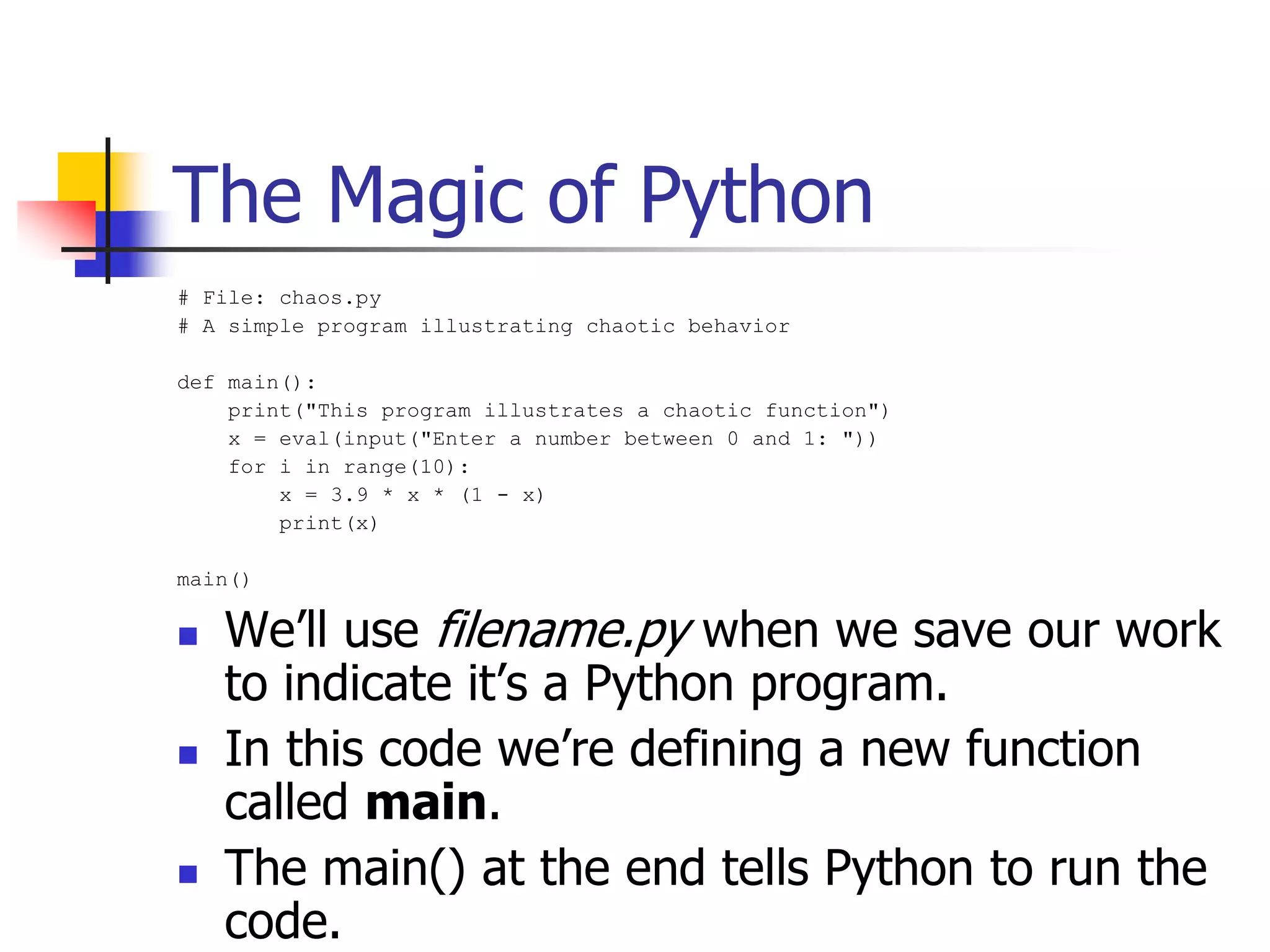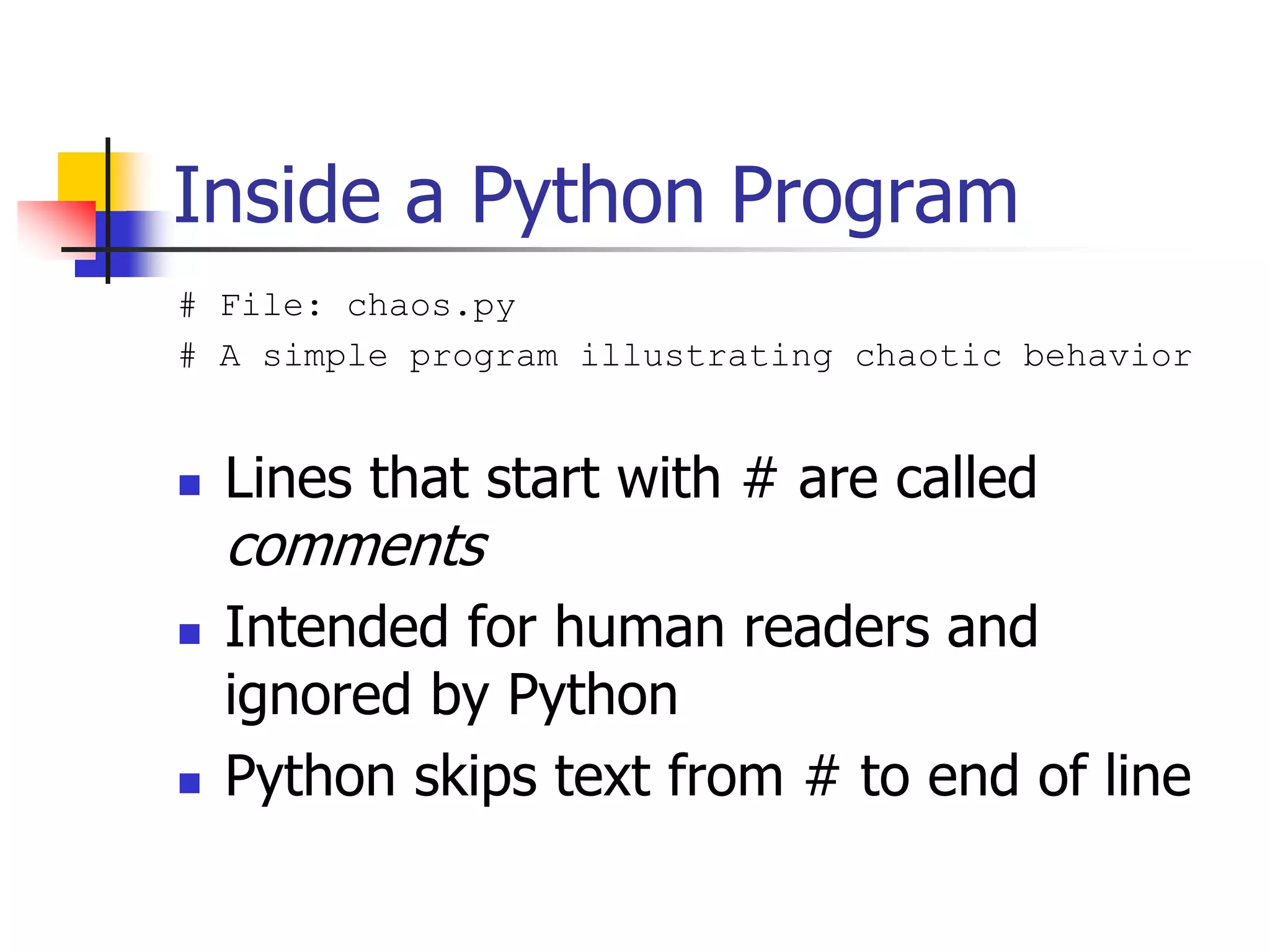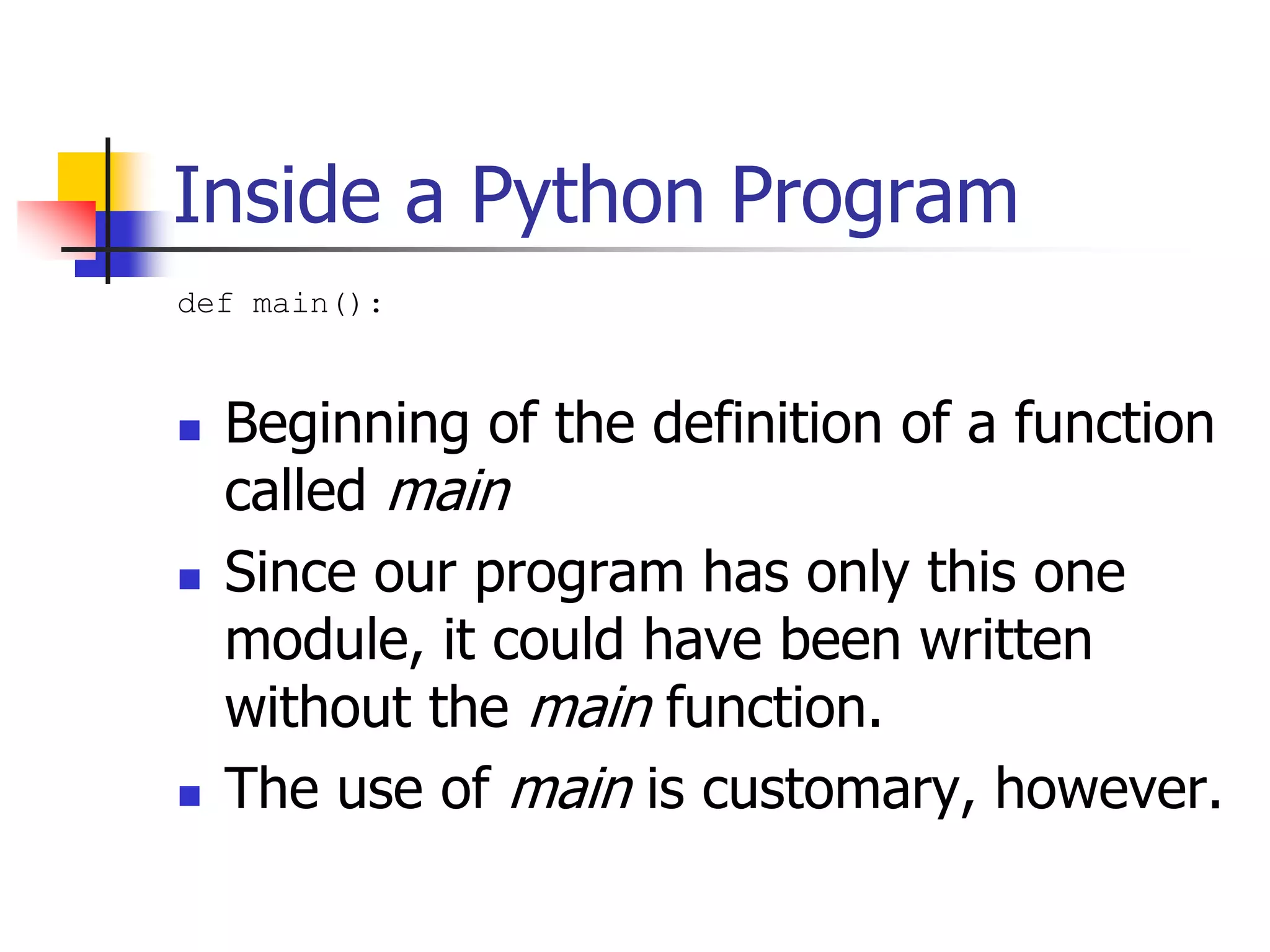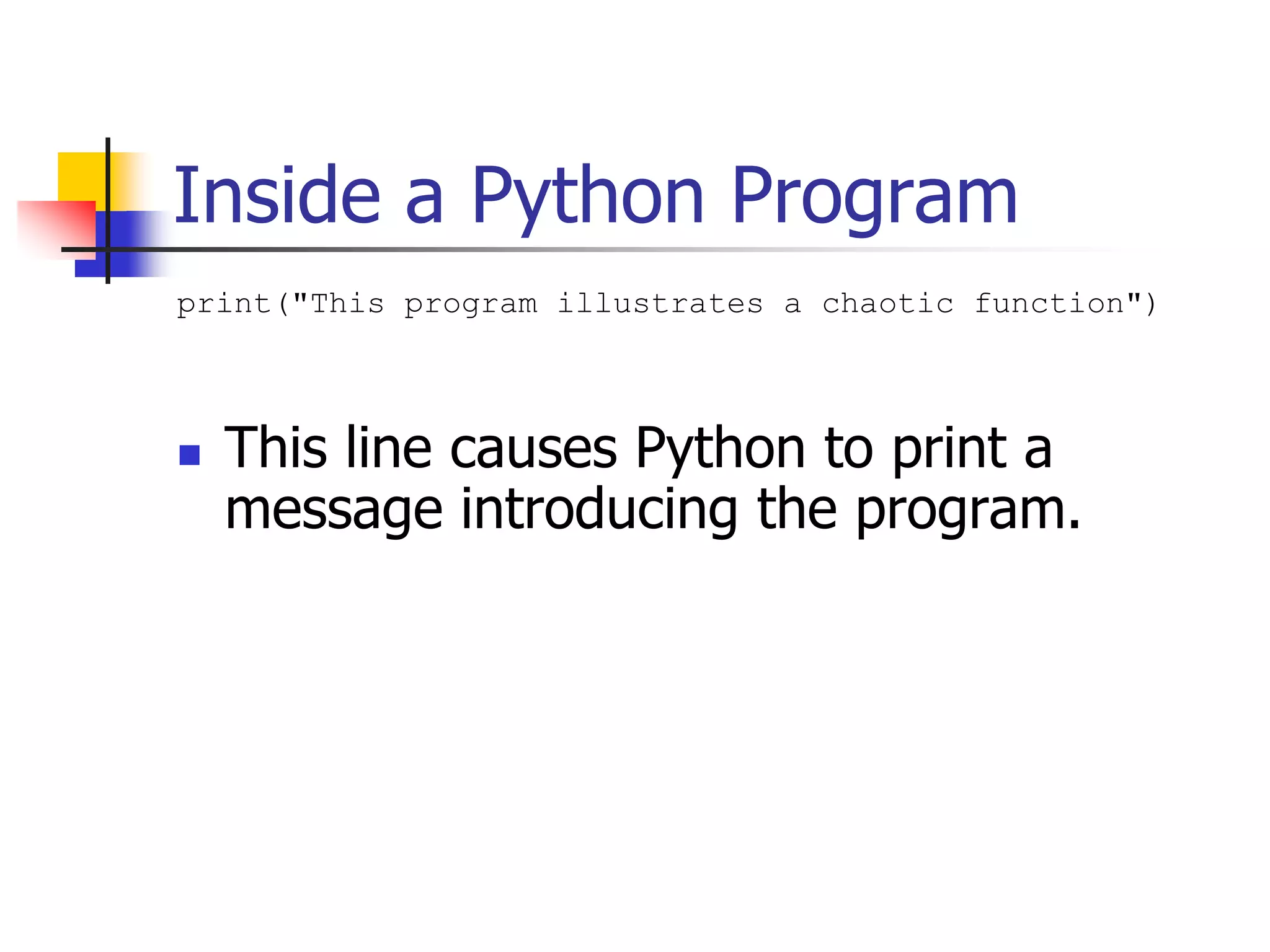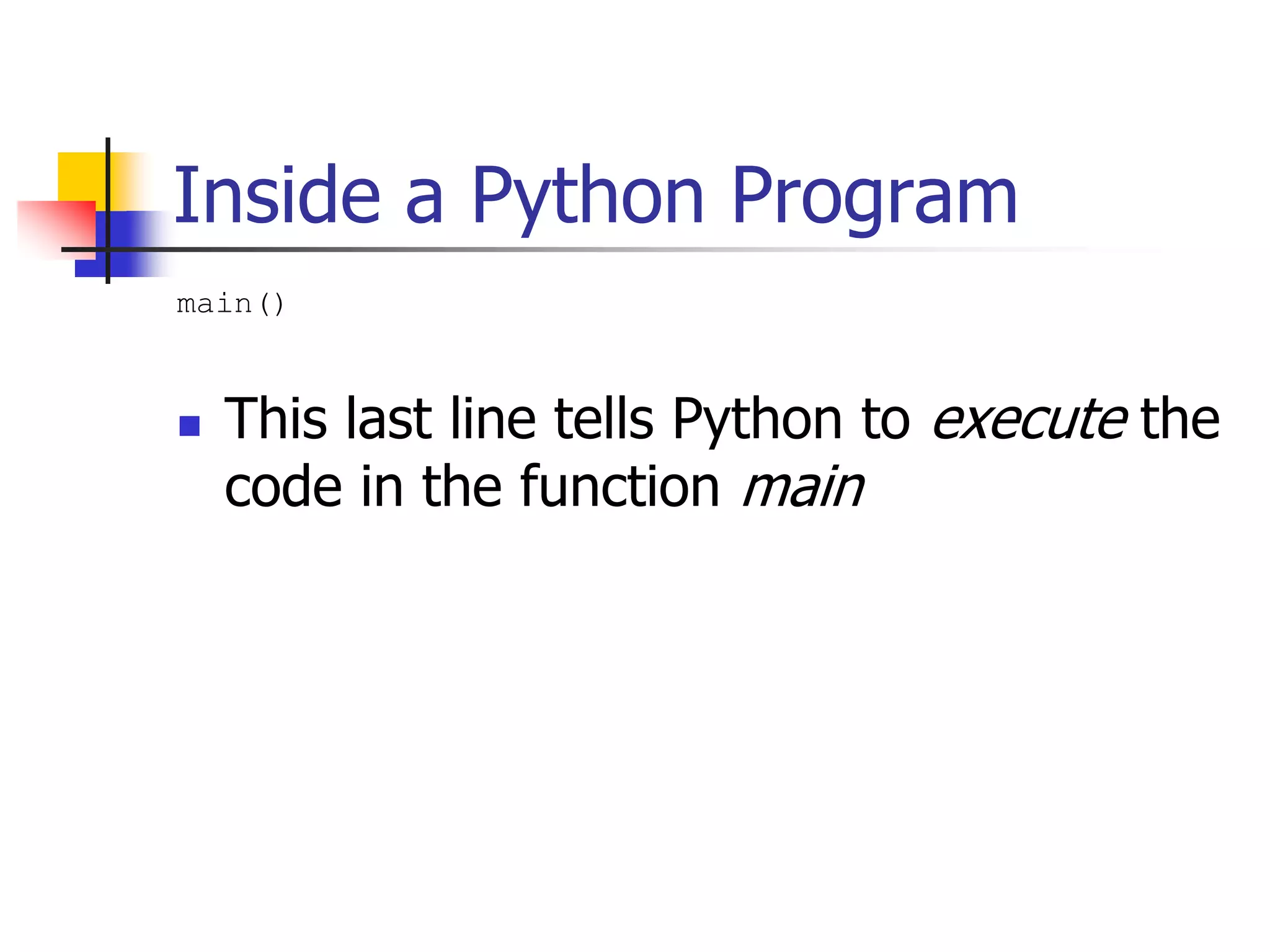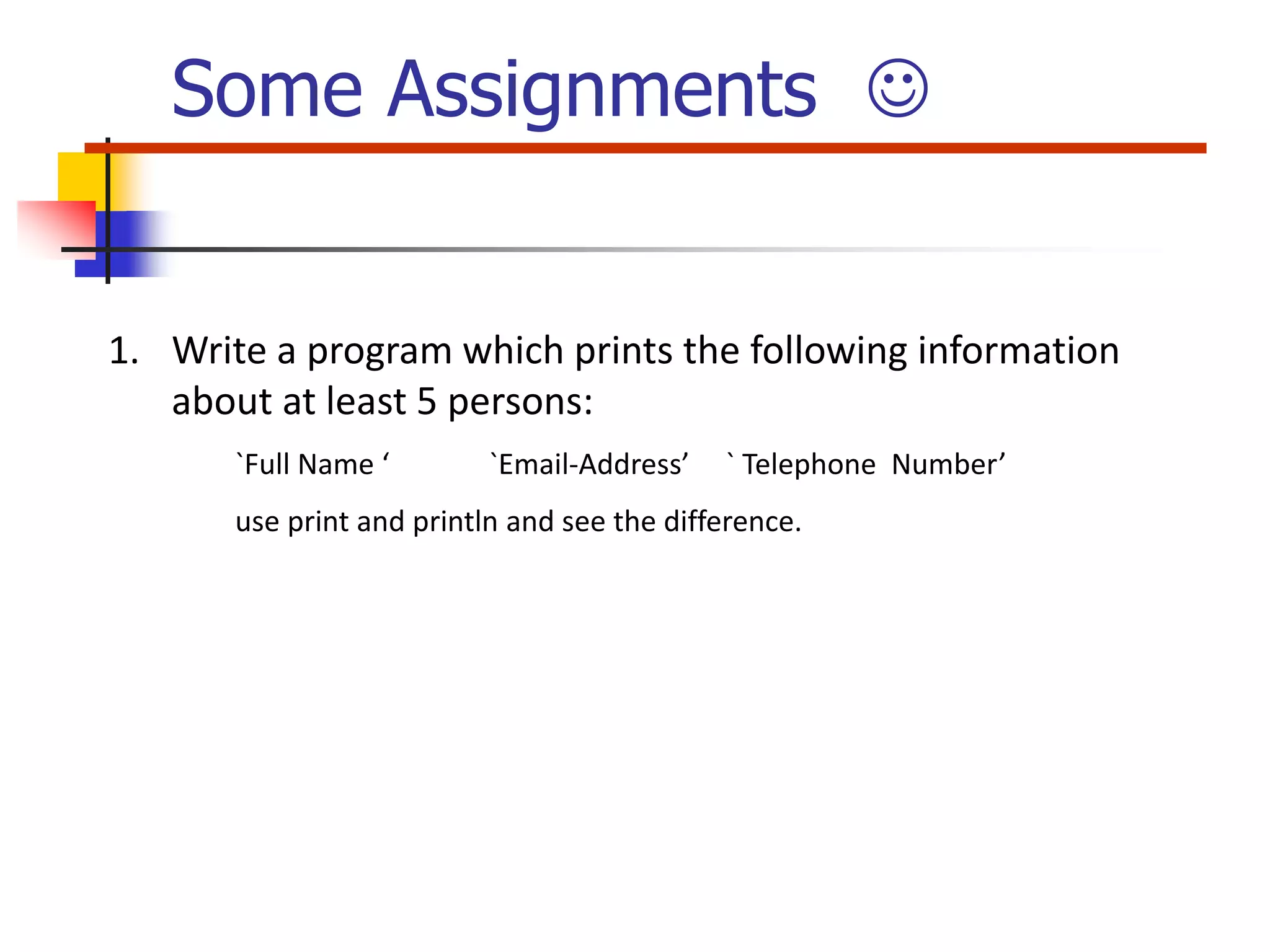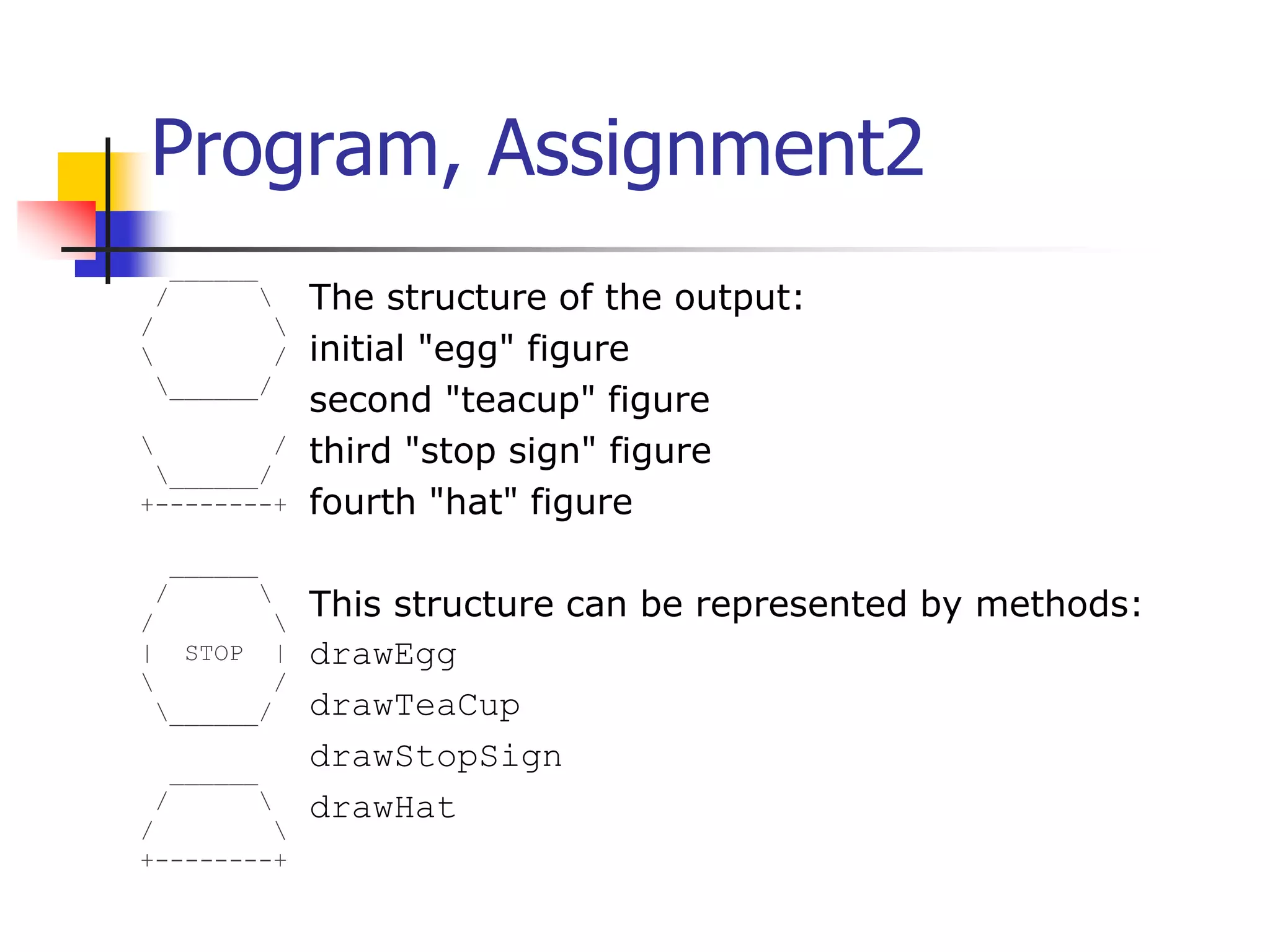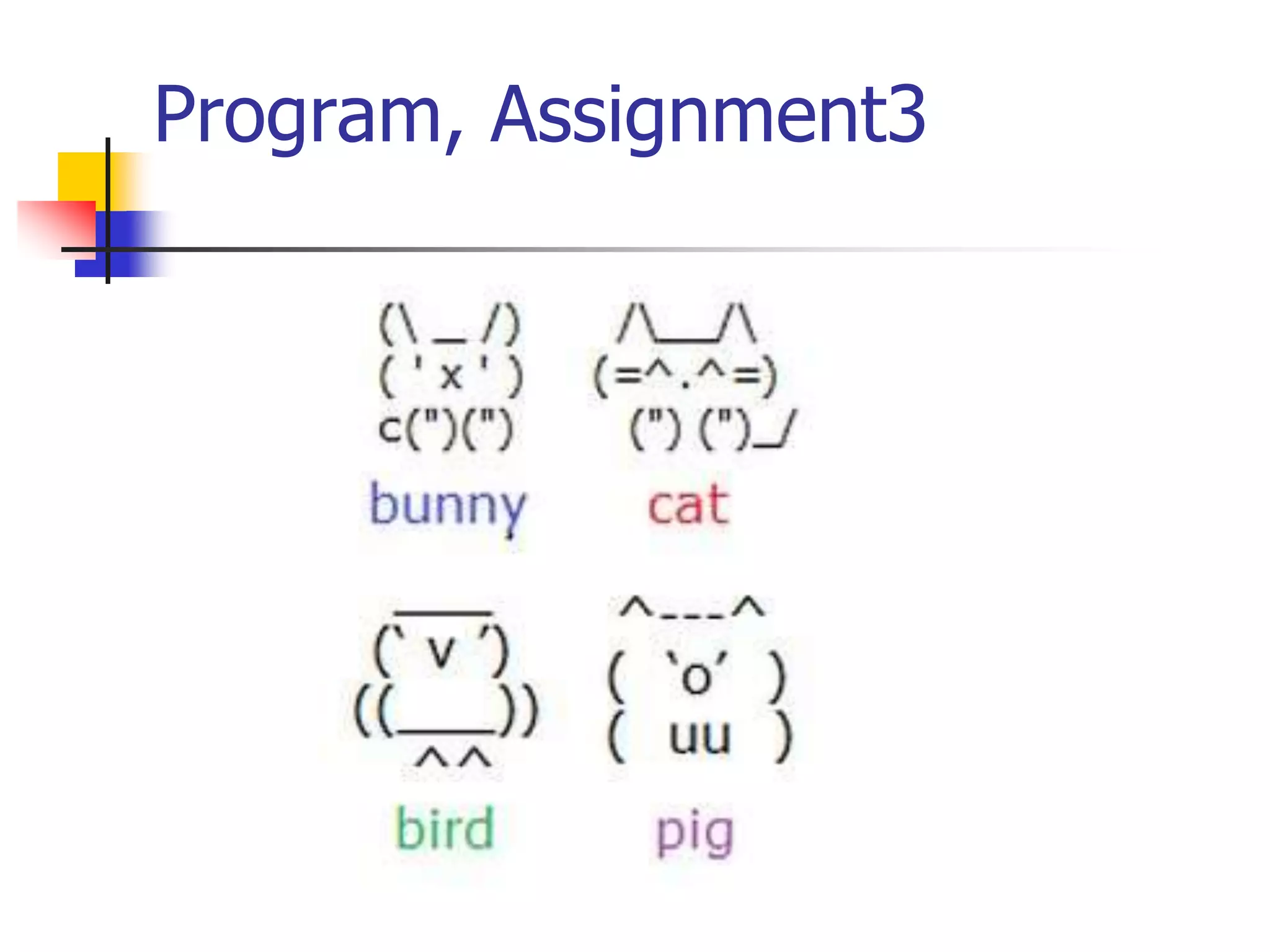The program defines a main function that prints information about 5 persons with their full name, email address and telephone number. It uses both print and println to see the difference in output between the two functions. The information is printed in a structured format with each person's details on a new line.
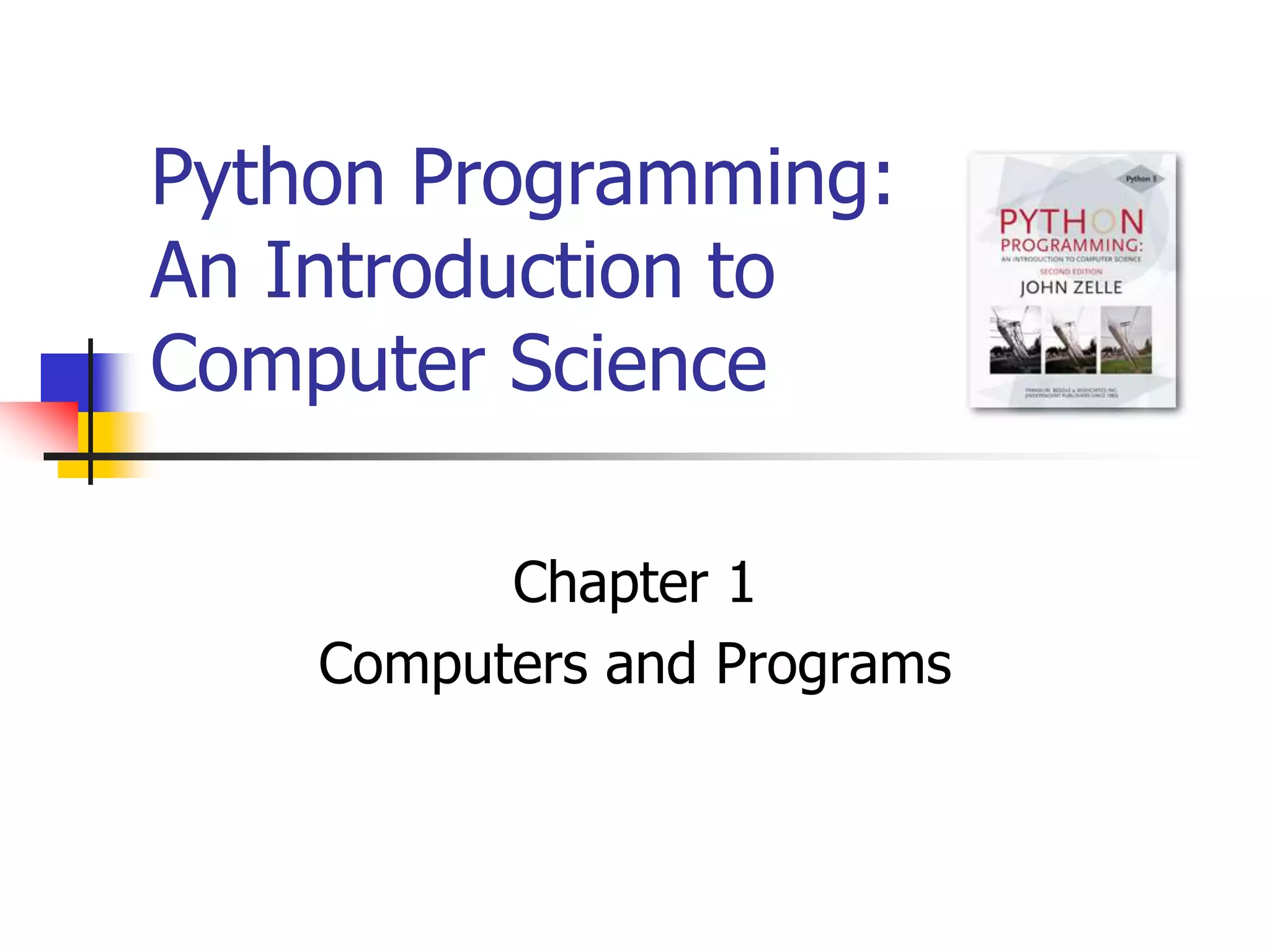
![The Magic of Python When you start Python, you will see something like: Python 3.1.2 (r312:79149, Mar 21 2010, 00:41:52) [MSC v.1500 32 bit (Intel)] on win32 Type "copyright", "credits" or "license()" for more information. >>>](https://image.slidesharecdn.com/chapter01python-220809140451-8a8f2a66/75/Chapter01_Python-ppt-2-2048.jpg)
